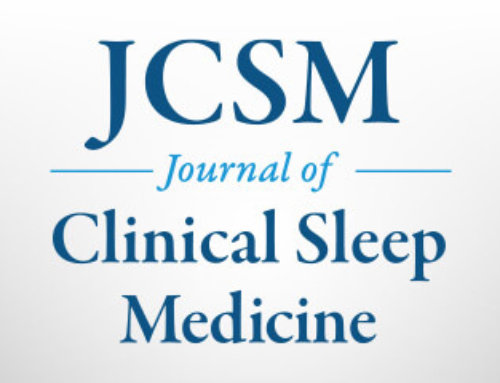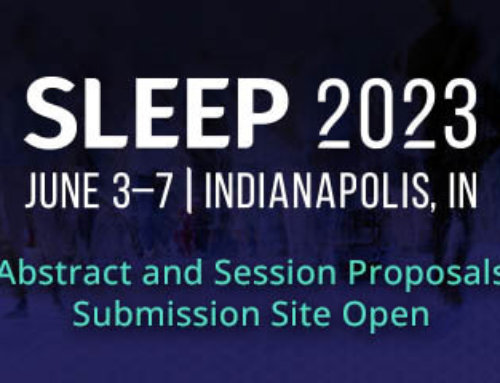EMBARGOED FOR RELEASE
June 10, 2008, at 12:01 a.m.
CONTACT:
Kathleen McCann
(708) 492-0930, ext. 9316
WESTCHESTER, Ill. – Children with a migraine headache are more likely to have sleep disorders, such as obstructive sleep apnea (OSA) and lack of sleep, than children without a migraine, according to a research abstract on the effects of headaches on children’s sleep patterns that will be presented on Tuesday at SLEEP 2008, the 22nd Annual Meeting of the Associated Professional Sleep Societies (APSS).
For this study, 90 children with headache and sleep problems underwent a polysomnogram, a sleep test that monitors the brain, eye movements, muscle activity, heart rhythm, and breathing. Of the participants, 60 had a migraine, 11 had a chronic daily headache, six had a tension headache and 13 had a non-specific headache.
The study found the children with a migraine were twice as likely as the other children in the study to have OSA. A sleep-related breathing disorder (SRBD) was found in 56 percent of the children with a migraine versus 30 percent of the children with a non-migraine headache. A severe migraine was also associated with shorter total sleep time, longer total time to fall asleep, and shorter REM sleep.
“Sleeping problems can exacerbate the problems a migraine causes on a child’s health and may hinder a child’s performance at school,” said Sanjeev Kothare, MD, senior author of the study. “Parents and doctors need to be aware of the strong likelihood of sleep disorders in children with a migraine and seek appropriate preventions and treatments.”
The study also found that 50 percent of children with tension headache grind their teeth at night, compared to 2.4 percent of children with a non-tension headache. In addition, an SRBD was also frequent in children with a non-specific headache and in children who were overweight.
The study was conducted at St. Christopher Hospital for Children, Drexel University, in Philadelphia, Pennsylvania. Dr. Kothare is currently at Harvard Medical School, Children’s Hospital in Boston.
OSA is an SRBD that causes your body to stop breathing during sleep. OSA occurs when the tissue in the back of the throat collapses and blocks the airway. This keeps air from getting into the lungs. OSA occurs in about two percent of young children. It can develop in children at any age, but it is most common in pre-schoolers. OSA often occurs between the ages of three and six years when the tonsils and adenoids are large compared to the throat. OSA appears to occur at the same rate in young boys and girls. OSA also is common in children who are obese, and is more likely to occur in a child who has a family member with OSA.
Sleep-related bruxism involves the grinding or clenching of teeth during sleep. It is common for the jaw to contract while you sleep. When these contractions are too strong, they produce the sound of tooth grinding. This can cause dental damage by wearing the teeth down. In most severe cases, hundreds of events can occur during the night. In milder cases, the grinding may vary from night to night.
The rate of bruxism seems to be highest in children. About 14 to 17 percent of children have it. It can begin as soon as a child’s upper and lower teeth have come through the gums. Around one third of children with bruxism will still have it when they are adults.
It can also be caused by stress and anxiety. This may be due to a life event or pressure at school or work.
It is recommended that school-aged children get between 10-11 hours of nightly sleep and children in pre-school between 11-13 hours.
The American Academy of Sleep Medicine (AASM) offers some tips to help your child sleep better:
- Follow a consistent bedtime routine. Set aside 10 to 30 minutes to get your child ready to go to sleep each night.
- Establish a relaxing setting at bedtime.
- Interact with your child at bedtime. Don’t let the TV, computer or video games take your place.
- Keep your children from TV programs, movies, and video games that are not right for their age.
- Do not let your child fall asleep while being held, rocked, fed a bottle, or while nursing.
- At bedtime, do not allow your child to have foods or drinks that contain caffeine. This includes chocolate and sodas. Try not to give him or her any medicine that has a stimulant at bedtime. This includes cough medicines and decongestants.
It is important to make sure that your child gets enough sleep and sleeps well. The value of sleep can be measured by your child’s smiling face, happy nature and natural energy. A tired child may have development or behavior problems. A child’s sleep problems can also cause unnecessary stress for you and the other members of your family.
Parents who suspect that their child might be suffering from a sleep disorder are encouraged to consult with their child’s pediatrician or a sleep specialist.
More information about children and sleep is available from the AASM at https://www.SleepEducation.com/Topic.aspx?id=8, child OSA at https://www.SleepEducation.com/Disorder.aspx?id=71 and bruxism at https://www.SleepEducation.com/Disorder.aspx?id=22.
The annual SLEEP meeting brings together an international body of 5,000 leading researchers and clinicians in the field of sleep medicine to present and discuss new findings and medical developments related to sleep and sleep disorders.
More than 1,150 research abstracts will be presented at the SLEEP meeting, a joint venture of the AASM and the Sleep Research Society. The three-and-a-half-day scientific meeting will bring to light new findings that enhance the understanding of the processes of sleep and aid the diagnosis and treatment of sleep disorders such as insomnia, narcolepsy and sleep apnea.
SleepEducation.com, a patient education Web site created by the AASM, provides information about various sleep disorders, the forms of treatment available, recent news on the topic of sleep, sleep studies that have been conducted and a listing of sleep facilities.
Abstract Title: Polysomnographic Findings in Children with Headaches
Presentation Date: Tuesday, June 10
Category: Pediatrics
Abstract ID: 0200
# # #








